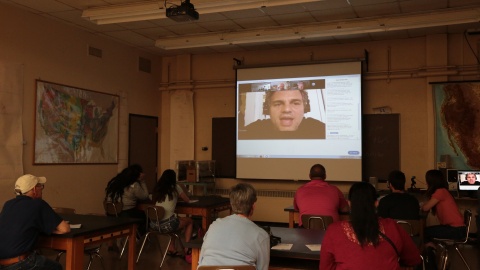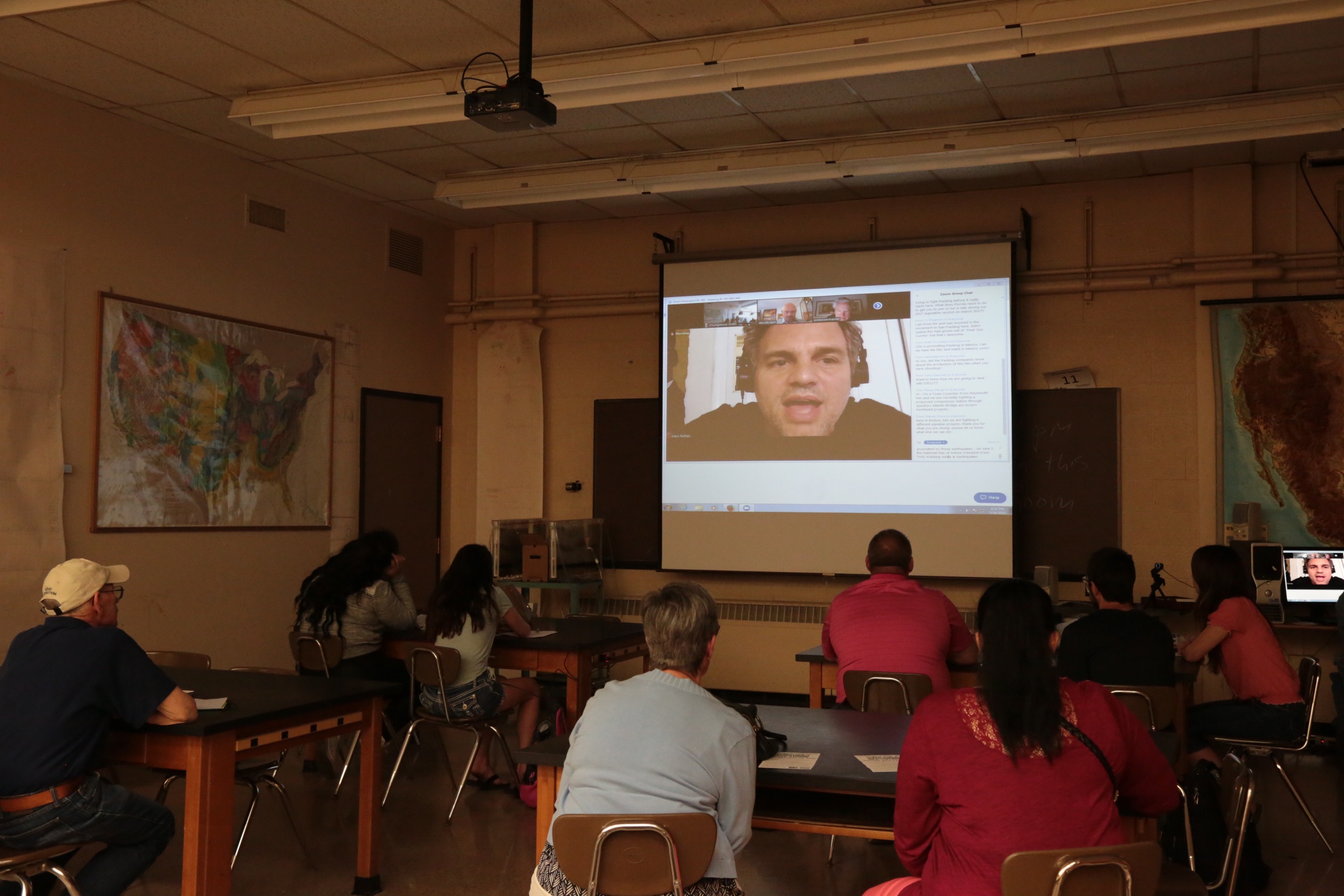By Samantha Phillips
Mark Ruffalo fielded a question from Ray Beiersdorfer, geology professor at Youngstown State University, during an online Q&A following a screening of the film “Dear President Obama.”
“This [question] comes from Youngstown, Ohio,” Ruffalo said. “Do I think you should give up? No!”

Beiersdorfer asked if he should stop pursuing a fracking ban within the city of Youngstown, Ruffalo said he would win next time. He said more people will be emboldened to join as efforts increase, and documentaries work as tools to help revolutionize communities.
Students, faculty and members of the community gathered in a room in Moser Hall to watch a free screening of the film, which was executive produced by Ruffalo. Ruffalo and director Jon Bowermaster fielded questions from several colleges and environmental groups afterwards.
The film focuses on Barack Obama’s claim that fossil fuels extracted through fracking could power America for the next century. Experts in the documentary say that fossil fuels will not sustain us longer than 20 years.
This documentary examined this problem and the effects of fracking across the United States and how Obama’s policies have increased the prevalence of fracking.
Beiersdorfer said the film crew for the documentary interviewed him and toured injection sites in Youngstown, but he didn’t make the final edit. Ohio wasn’t mentioned in the movie.
Beiersdorfer said he likes to educate people on energy and the environment.
“One of the two major threats that we have are nuclear war and climate change,” Beiersdorfer said. “So I’m doing what I can to help educate the community.”
Henrietta Bibbs, a member of the Community Environmental Legal Defense Fund, said one of the most shocking scenes in the film was when they revealed fracking wastewater is used for irrigation in California.
“Our food source is in danger,” Bibbs said. “In California, which is our breadbasket, many of the agribusinesses are using [polluted] water to irrigate the very fruits and vegetables we eat.”
She said the documentary highlighted one of her concerns, which is that old inactive injection wells can be impacted by fracking and gas can be released.
“It’s the air that’s being polluted. It’s the increase of asthma and COPD, because of particles that are in the air,” she said. “It’s dangerous.”
Tish O’Dell, Ohio community organizer for the CELDF, said the film provides a corrective to media coverage she claims is biased because of the influence of oil companies. However, she doesn’t agree with the film’s message that people need to persuade elected officials in order to create change in their community.
“This promotes very much that we have to count on our elected to make the change for us, and I believe in the power of the people,” she said. “Why can’t we make laws to protect ourselves? That’s what the Youngstown Community Bill of Rights [the anti-fracking legislation] is all about.”
Although the film champions the fracking ban that was implemented in New York, O’Dell said there is still much work to be done. They still have pipelines and use fracking waste on the roads as a de-icer.
The documentary said environmental agencies want to make America become 100 percent reliant on renewable energy sources such as wind and solar power by 2050. O’Dell said that could be a problem, because corporations can still use eminent domain to take people’s property and build things such as wind turbines to harness renewable energy.
She stressed the role of an active citizenry in achieving her organization’s goals.
“We can’t just assume we are electing people that are going to go to DC and abide by our wishes. They end up becoming multimillionaires,” O’Dell said. “We are going to have to take hold of our country ourselves.”
